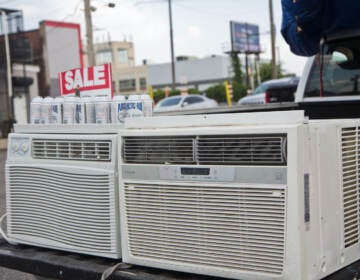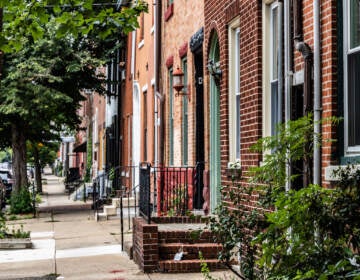Daily News: Despite expansion of Big Bellies, city’s in good shape
By Catherine Lucey & Emily Schultheis
Philadelphia Daily News, April 14, 2010
BIG BELLIES are about to get even bigger in Philadelphia.
The high-tech trash cans, which require fewer collections because they compact waste using solar power, hit the streets last spring at 500 Center City locations. Recycling cans were placed next to 210 of the compacters, the first pedestrian recycling offered in the city.
One year in, the reviews are pretty good.
“Honestly I think they’ve been a real boon to the street,” said architect Jim Campbell, a member of the South Street West Business Association. “They seem to be working well; there seems to be less stuff outside them. We’re very happy.”
More business owners may soon be singing that tune. Another 440 Big Bellies – dubbed for the company that manufactures them – are being installed this spring and summer in commercial districts throughout the city, along with 185 recycling cans.
The cans are being funded with $900,000 in city dollars and $973,000 from the federal stimulus act, said Streets Commissioner Clarena Tolson.
The city used $2.2 million in state money to buy the first 500 Big Bellies to replace 700 wire trash bins. Tolson said the Big Bellies have saved the city money in manpower hours because the 200-gallon capacity cans only need five weekly collections, compared with 19 for the old 55-gallon litter baskets. That means eight workers are now assigned to collect the trash, compared with 33 previously.
Tolson said the freed-up workers have been reassigned to help collect household recycling, which has sharply increased since the introduction of single- stream recycling.
“We would have had to hire people,” Tolson said, if those workers were not available.
A Daily News review of 53 of the 500 Big Bellies found that most were working as expected. Eight of the cans were marred with graffiti. Only three of 53 that we checked – one on Market Street, and two on South Broad Street – were full or had a trash door that didn’t open.
Tolson said that the city monitors the cans with a wireless system, so it can quickly tell if there is a problem and an extra visit is required.
“We can tell in the office the capacity of the can. That lets us know if we have any specific problem,” Tolson said.
Carla Puppin, director of the Queen Village Neighborhood Association, said Big Bellies have enhanced the neighborhood, which includes the eastern end of South Street.
“I think they have helped us on South Street. It’s great to have recycling containers next to them,” Puppin said. But she noted that “we still have the problem where you get short-dumping next to [some of] them,” referring to illegally piled trash.
Tolson said the city is still fighting the problem of people dumping trash next to the cans – also a problem with the wire cans – but said it has decreased.
Still, some residents say they’re still looking at Big Bellies longingly from afar.
Andrew Dalzell, program coordinator for the South of South Neighborhood Association, said there are no city trash cans in his neighborhood, which adds to litter in the streets.
“They’re tantalizing close and then you come two blocks south, and we’ve got nothing,” Dalzell said.
“It’s a constant battle. I’m here at 19th and Christian every day picking up stuff. A lot of people come into my office frustrated, dog-walkers especially.”
Tolson said the city has no plans to add trash cans – Big Bellies or wire cans – in the neighborhoods.
“We’re not putting litter cans where they don’t already exist,” Tolson said.
“We don’t necessarily encourage having them in residential areas because people abuse them and they’re used for household waste.”
WHYY is your source for fact-based, in-depth journalism and information. As a nonprofit organization, we rely on financial support from readers like you. Please give today.






